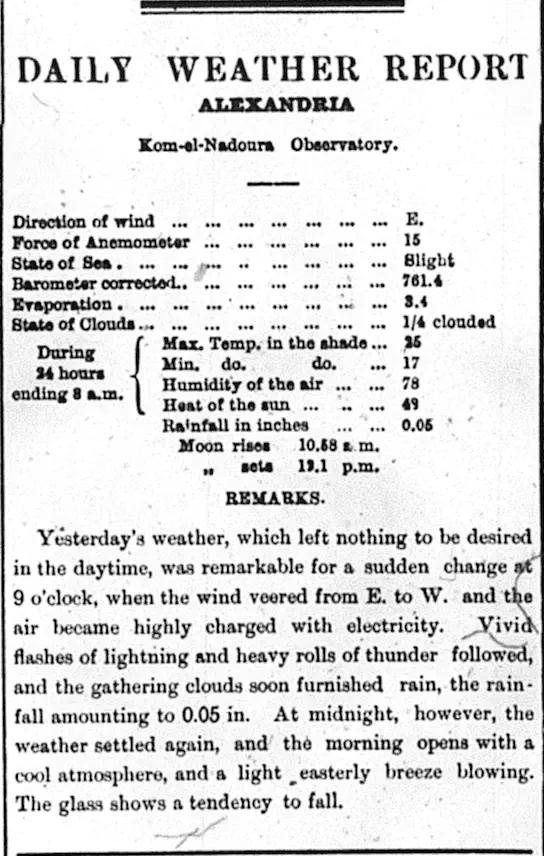Rain in the Desert
 Rain in the Nile on page 7 of the Thursday May 30th, 1906 issue
Rain in the Nile on page 7 of the Thursday May 30th, 1906 issuePeople often think of the Nile River as one of the most fertile places in the world. As a result, many colonies and cities sprouted up. Historically, humans tend to colonize towards large bodies of fresh water such as rivers or lakes because it is essential for life. However, a desert doesn’t seem like a great location to live or get a good supply of fresh water. Alexandria, Egypt is one of those exceptions. On May 30th, 1906, according to their Daily Weather Reports, Alexandria received 0.05 rainfall. It started off with a change in the wind direction from East to West, and the air became very electric. Vivid lightning strikes lit up the sky as thunder came booming in and the clouds began precipitating. While it may not be much, it still rained in the desert.
Rain is not a phenomenon many people are too pleased with; however, rain brings much more benefits, especially in the desert than some may think. With rainfall, there tends to be a decrease in the high temperature, an increase in the low temperature, cool winds, as well as an increased chance of the Nile flooding in the future. While flooding certainly does not sound good for most, in Alexandria, Egypt, when the Nile floods, it fertilizes the land making it ideal for growing crops. The more floods there are, the more fertile the land is; therefore, the more food that can be grow. Maybe living in the desert is not a bad idea after all. Besides, living in Florida heat has given me an advantage!